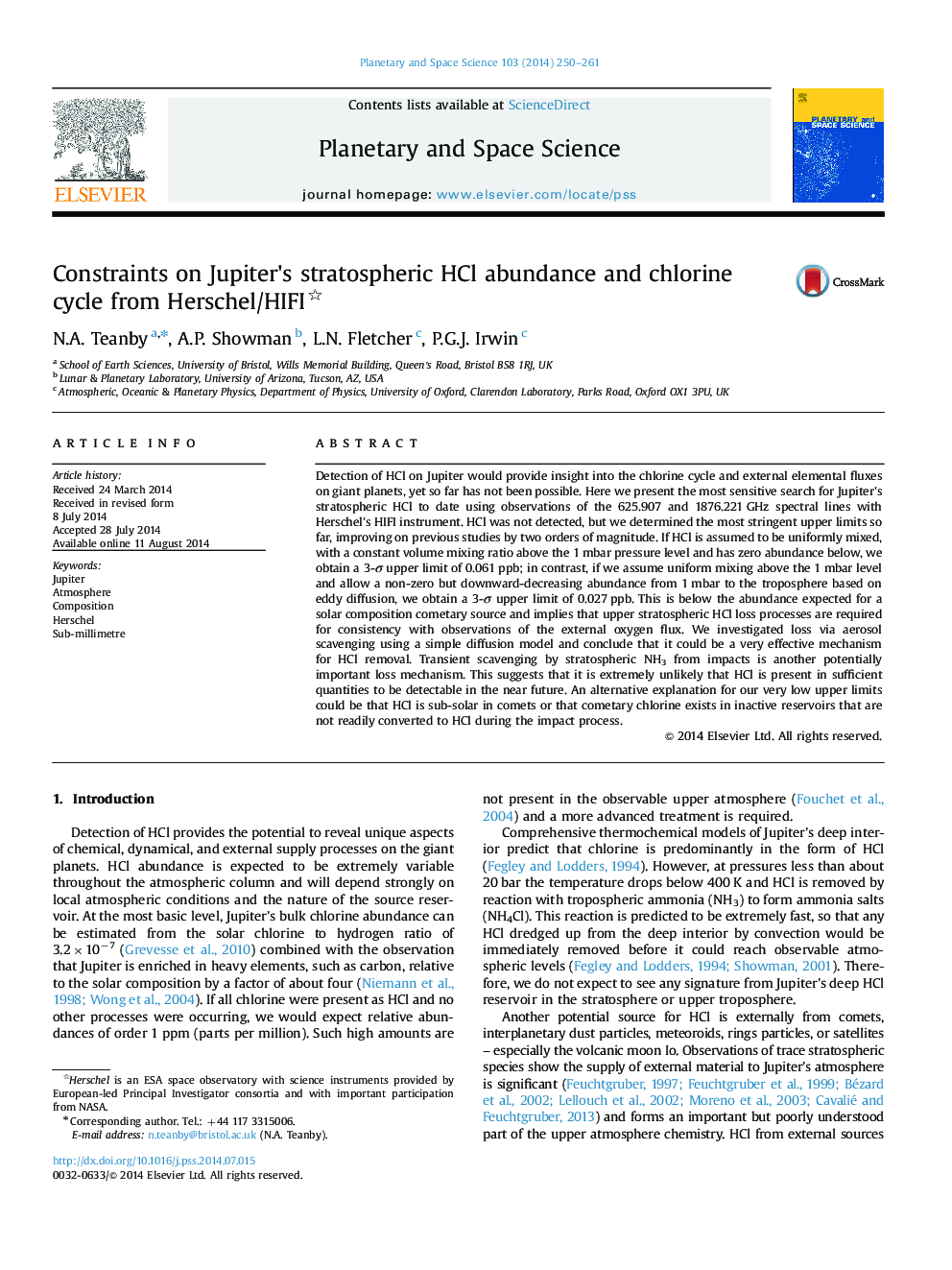| کد مقاله | کد نشریه | سال انتشار | مقاله انگلیسی | نسخه تمام متن |
|---|---|---|---|---|
| 8143504 | 1523934 | 2014 | 12 صفحه PDF | دانلود رایگان |
عنوان انگلیسی مقاله ISI
Constraints on Jupiter׳s stratospheric HCl abundance and chlorine cycle from Herschel/HIFI
دانلود مقاله + سفارش ترجمه
دانلود مقاله ISI انگلیسی
رایگان برای ایرانیان
کلمات کلیدی
موضوعات مرتبط
مهندسی و علوم پایه
علوم زمین و سیارات
فیزیک زمین (ژئو فیزیک)
پیش نمایش صفحه اول مقاله

چکیده انگلیسی
Detection of HCl on Jupiter would provide insight into the chlorine cycle and external elemental fluxes on giant planets, yet so far has not been possible. Here we present the most sensitive search for Jupiter׳s stratospheric HCl to date using observations of the 625.907 and 1876.221 GHz spectral lines with Herschel׳s HIFI instrument. HCl was not detected, but we determined the most stringent upper limits so far, improving on previous studies by two orders of magnitude. If HCl is assumed to be uniformly mixed, with a constant volume mixing ratio above the 1 mbar pressure level and has zero abundance below, we obtain a 3-Ï upper limit of 0.061 ppb; in contrast, if we assume uniform mixing above the 1 mbar level and allow a non-zero but downward-decreasing abundance from 1 mbar to the troposphere based on eddy diffusion, we obtain a 3-Ï upper limit of 0.027 ppb. This is below the abundance expected for a solar composition cometary source and implies that upper stratospheric HCl loss processes are required for consistency with observations of the external oxygen flux. We investigated loss via aerosol scavenging using a simple diffusion model and conclude that it could be a very effective mechanism for HCl removal. Transient scavenging by stratospheric NH3 from impacts is another potentially important loss mechanism. This suggests that it is extremely unlikely that HCl is present in sufficient quantities to be detectable in the near future. An alternative explanation for our very low upper limits could be that HCl is sub-solar in comets or that cometary chlorine exists in inactive reservoirs that are not readily converted to HCl during the impact process.
ناشر
Database: Elsevier - ScienceDirect (ساینس دایرکت)
Journal: Planetary and Space Science - Volume 103, 15 November 2014, Pages 250-261
Journal: Planetary and Space Science - Volume 103, 15 November 2014, Pages 250-261
نویسندگان
N.A. Teanby, A.P. Showman, L.N. Fletcher, P.G.J. Irwin,